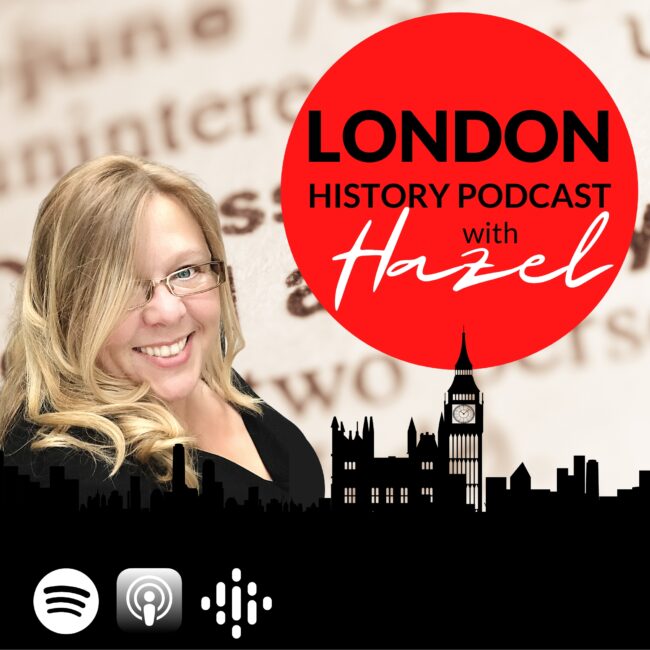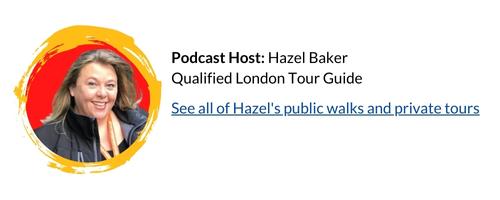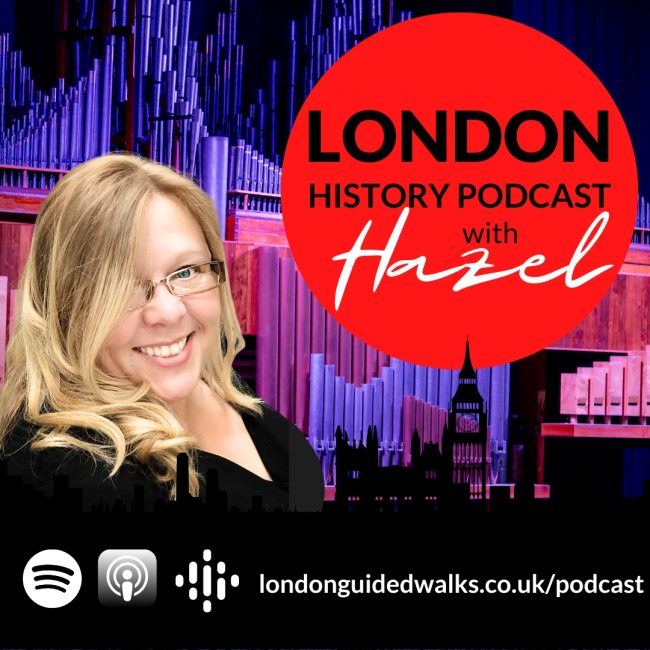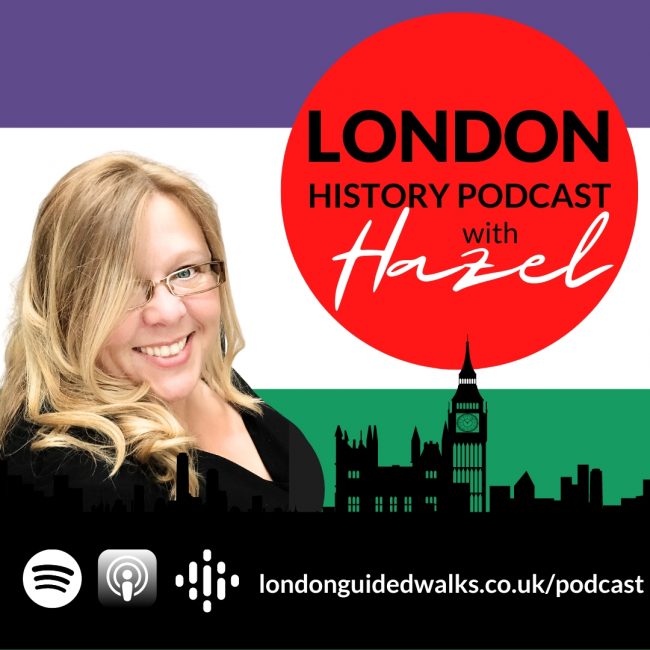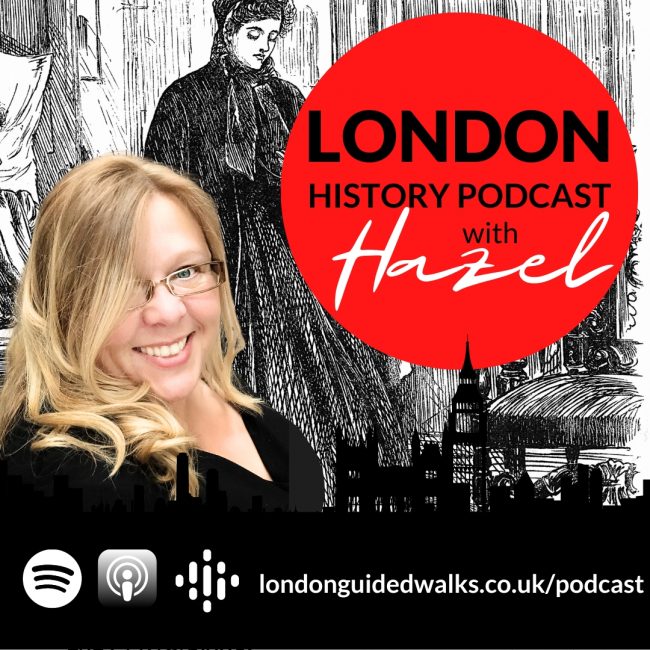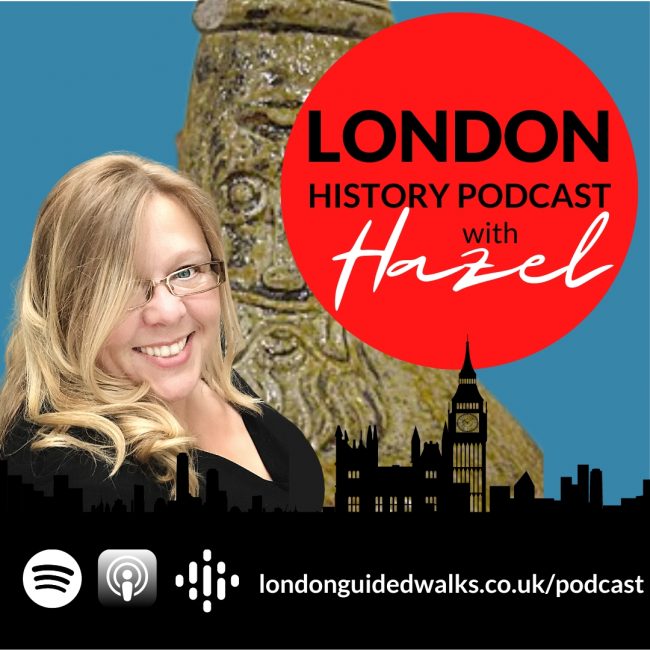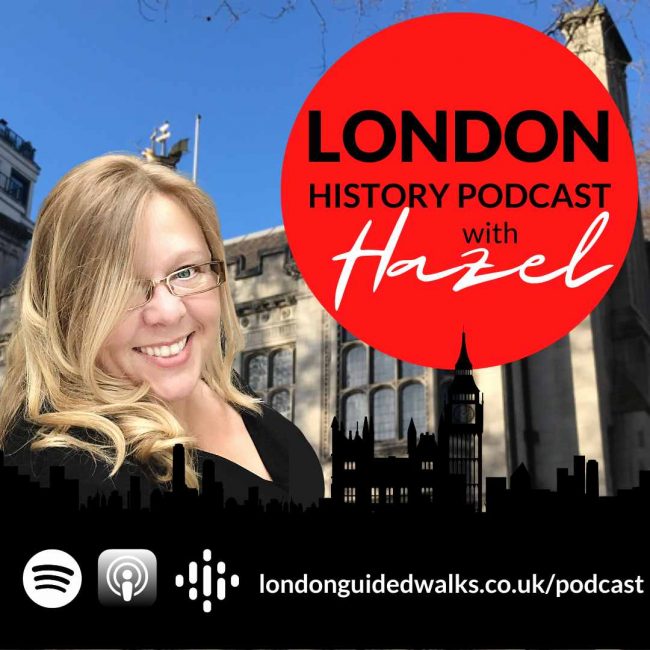In this episode, we unravel how the city of London, in all its gritty allure and shadowed corridors, becomes more than just a backdrop; it morphs into an active participant in the narrative, a complex character in its own right. Much like Dr Jekyll’s transformation into Mr Hyde, London too wears its dual identity proudly. It’s a city that’s both the epitome of Victorian respectability, brimming with high society and intellectual fervour, and also a labyrinthine underworld, rife with moral ambiguities and social inequalities.
Join us as we explore how Stevenson’s portrayal of London captures the essence of a city suspended between the poles of virtue and vice. We’ll investigate the real streets and locales that come alive in the novella, drawing connections between the fictional world and the historical context of Victorian London. Alongside, we’ll consider the diverse interpretations of the novella, examining how the tale continues to captivate modern audiences in everything from cinema to stage plays, keeping both Dr Jekyll and London itself forever immortalised in our cultural imagination.
So sit back, pour yourself a cup of tea or perhaps something a tad stronger, and prepare to journey into the heart of a story—and a city—that refuses to be forgotten.
Useful Links:


Virtual Jekyll & Hyde tours are available. Contact us.
Transcript:
Hazel Baker: It’s September which means yes, we are back for more episodes of our London History Podcast.
It also means that thousands of UK GCSE English literature students will start to read the famous story by Robert Louis Stephenson ‘The Strange Case of Dr Jekyll and Mr Hyde’. While the novella offers a wealth of educational potential for teenagers, its significance extends beyond the classroom setting, particularly for anyone interested in understanding Victorian London and its historical context which is why I offer a Jekyll and Hyde walking tour; there are public dates are on the website and private tours are available (and particularly popular with school groups).
Educational Value for Teenagers
For young students, Stevenson’s novella serves as an excellent introduction to Victorian literature, covering key themes such as the duality of human nature, ethical dilemmas, and societal norms. It presents these themes in a narrative that is engaging, thought-provoking, and, most importantly, relatable to a younger audience. In an age where questions about identity and morality are still very much relevant, this is a story which provides a platform for teenagers to grapple with these complex issues.
Insights into Victorian London
Beyond its educational value for young readers, the novella is also a rich tapestry of social and cultural norms of Victorian London. Whether it is the respectable façade of Dr Jekyll or the lurking menace of Mr Hyde, each represents various aspects of London society at the time. Dr Jekyll’s stately residence and his professional standing as a doctor reflect the upper echelons of Victorian society. Meanwhile, the disreputable areas he frequents as Mr Hyde illuminate the darker corners of the city, complete with their own moral ambiguities and social complexities.
Broader Understanding
This dichotomy between the respectable and the disreputable offers a nuanced look into the Victorian mindset, with its strict moral codes and the growing tensions between traditional values and emerging scientific and social change. The novella’s themes intersect with significant scientific ideas of the time, notably Charles Darwin’s theory of evolution. In this light, Hyde can be seen as the primal, ‘animalistic’ side of Jekyll, a vivid illustration of the era’s concerns with regression and the latent bestiality in humans. Victorian London itself was undergoing rapid transformation, with scientific advancements bringing both prosperity and new social dilemmas, further amplifying the story’s resonance.
Dr Jekyll & Mr Hyde on stage and screen
The enduring allure of Robert Louis Stevenson’s “The Strange Case of Dr Jekyll and Mr Hyde” is manifestly evident in its various adaptations and reinterpretations across multiple mediums. Since its initial publication in 1886, this seminal novella has transcended the boundaries of literature to become an indelible part of our cultural fabric. With themes as timeless as the duality of human nature, ethical dilemmas, and the tension between the civilised and primal aspects of humanity, it is little wonder that the story has seen so many lives beyond the printed page.
In the realm of cinema, some of the earliest adaptations, such as the 1920 silent film starring John Barrymore, sought to capture the eerie atmosphere and moral urgency of the original text. The 1931 rendition starring Fredric March is particularly lauded, even earning March an Academy Award for his dexterous portrayal of both Dr Jekyll and Mr Hyde. By 1941, when Spencer Tracy took on the roles, the story was approached with a greater focus on psychological depth, reflecting shifts in societal understanding of mental health and human complexity.
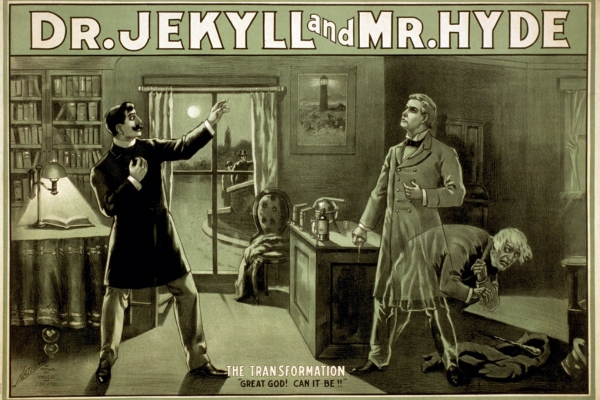
On the stage, Thomas Russell Sullivan’s 1887 version was one of the inaugural adaptations, contemporaneous with the novella itself. The story later found a home on Broadway in the 1990 musical “Jekyll & Hyde,” capturing audience’s attention with its evocative score. Touring extensively in the UK, Nick Lane’s 2017 play provides yet another nuanced interpretation for theatre aficionados.
The world of opera has not been immune to the story’s magnetism. Compositions by Evan Hause and Gerard Pape incorporate musical complexity to dissect the psychological entanglements and ethical quandaries that make the original tale so captivating.
In the domain of modern reinterpretations, Dr Jekyll finds himself reimagined as a Victorian-era superhero in “The League of Extraordinary Gentlemen,” played by Jason Flemyng. The BBC’s “Jekyll” catapults the character into the 21st century, re-envisioned as a contemporary scientist. Even the 2017 film “The Mummy” attempted to integrate Dr Jekyll played by Russell Crowe, albeit with a portrayal that many consider to be unfulfilled in its potential.
Across these varied adaptations and interpretations, what emerges is the remarkable versatility and timelessness of Stevenson’s novella. The story’s potent themes and compelling characters continue to provide fertile ground for artistic experimentation, demonstrating that the questions raised by “The Strange Case of Dr Jekyll and Mr Hyde” are far from resolved, remaining as relevant and thought-provoking today as they were in the turbulent societal landscape of Victorian London.
So what is in this story which has captured the imaginations of generations? In order to answer that, we need look a little closer at this story and the society in which the story is set.
Let’s start with the basics,
What is The Strange Case of Dr Jekyll and Mr Hyde?
It was penned by Robert Louis Stevenson in 1886, is a seminal work that delves into the complexities of human nature and the dualities inherent in modern civilisation. The novella presents Dr Henry Jekyll, a respected London scientist who, in an experiment aimed at separating the good and evil components of his nature, inadvertently creates Mr Edward Hyde, a repugnant alter-ego devoid of social and moral restraint. The story unfolds as a mystery, narrated through multiple perspectives, that culminates in the tragic disintegration of Dr Jekyll’s life as he loses control over Mr Hyde.
Write Stephen King, the King of Horror, said; “If [Bram Stoker’s] Dracula leaves one with the sensation of having been struck down by a massive, 400-page wall of horror, then Dr Jekyll and Mr Hyde is like the sudden, mortal jab of an ice pick.”
One of the lesser-known but captivating details Stevenson’s “The Strange Case of Dr Jekyll and Mr Hyde” is the story of its genesis. Stevenson reportedly wrote the first draft in a feverish burst of inspiration, completing it within just a few days, whilst on holiday. However, upon reading it, his wife, Fanny, offered a critique that led him to burn the manuscript and start anew. The novella that exists today is actually the second draft, rewritten in another similarly short period of intense creativity.
This process of creation and re-creation—of wrestling with a narrative until it reaches its most potent form—adds another layer to our understanding of the novella. It allows us to appreciate the complexity and depth of thought that went into crafting this exploration of human duality, making the work all the more intriguing and worthy of discussion, especially for those deeply interested in Victorian literature and culture.
The tale is compelling for several reasons. Firstly, it acts as an incisive critique of Victorian society, which was rife with stark social contrasts and rigid moral codes. The split between Dr Jekyll and Mr Hyde can be seen as an allegory for the dichotomous existence led by many in this era — a life of surface-level propriety masking deeper human impulses.
Secondly, the novella broaches the ethical concerns stemming from scientific advancements. It raises profound questions about the responsibilities that come with scientific discovery and innovation, a topic that had great relevance in an era of rapid technological and medical advancements. The narrative portrays the dire consequences of bypassing ethical considerations in the pursuit of knowledge, reflecting the anxieties of a society standing at the crossroads of tradition and modernity.
Thirdly, the book’s psychological dimensions are timeless. The character of Dr Jekyll serves as an early exploration of the subconscious mind, predating Freudian psychology but echoing many themes that would later become central to the field.
Dr Jekyll’s transformation into Mr Hyde is not merely a physical one; it reflects a moral schism, separating his virtuous self from his baser instincts. This was a theme that resonated strongly with Victorian audiences, given the period’s focus on moral rectitude and public decency.
Stevenson employs an intricate narrative structure, making extensive use of multiple perspectives, letters, and documents to gradually unfold the story’s mysteries. This adds a layer of suspense and keeps the reader engaged, as one navigates through the complicated moral landscape the characters inhabit. It also allows Stevenson to avoid a didactic tone, instead posing questions about identity and morality without providing easy answers.
Lastly, the narrative style itself — a blend of mystery, horror, and psychological drama — makes it an engaging read. The term “Jekyll and Hyde” has entered everyday language, symbolising any form of moral or psychological dualism, indicating the story’s long-lasting impact on broader cultural understandings of identity and morality.

Why is Dr Jekyll and Mr Hyde a novella and not a novel?
The classification of “The Strange Case of Dr Jekyll and Mr Hyde” as a novella rather than a novel is due to several factors, encompassing length, scope, and structural focus.
Length
Firstly, the text is considerably shorter than what is typically considered a novel. Novels usually offer an expansive portrayal, not only of a story but also of characters, settings, subplots, and themes. A novella, however, tends to be more focused, honing in on a single idea, event, or set of characters. “Jekyll & Hyde” falls into this category, with its compact size allowing for a swift but deep examination of its central theme: the duality of human nature.
Scope and Depth
Novels often explore multiple themes, subplots, and a wide array of characters. In contrast, “Jekyll & Hyde” has a limited scope; it doesn’t venture into subplots or an extensive exploration of secondary characters. Instead, it fixates almost exclusively on Dr Jekyll and his alter ego, Mr Hyde, and the moral implications of their existence. The story is focused on this central issue, exploring it in depth but without the multiple layers of complexity that one might expect in a full-length novel.
Structural Focus
The structure of a novella is often more straightforward than that of a novel, usually following a linear narrative or employing fewer narrative techniques. In “Jekyll & Hyde,” we see the story largely unfold through the eyes of Mr Utterson, the lawyer, and it follows a fairly straightforward narrative arc leading to the revelation of Jekyll and Hyde’s relationship. This focused narrative lens suits the novella form well, facilitating a targeted exploration of the work’s key themes.
Impact on Audience
The novella form also allows for a concentrated impact. The brevity of the text ensures that the moral and psychological complexities are presented in a way that grips the reader quickly, leaving little room for distraction.
This concentrated form of storytelling makes “Jekyll & Hyde” a potent vehicle for its unsettling exploration of good and evil, a format that arguably enhances its lasting impact on readers and its adaptability into various other media.
Publisher of Dr Jekyll & Mr Hyde
We sometimes forget that publishing a book does require a publisher, and in this case the publisher was Longmans, Green & Co. By the 1880s, Longmans, Green & Co. had become an esteemed cornerstone in the realm of publishing, wielding considerable influence over both the intellectual and cultural landscapes of Victorian Britain. The decade witnessed a flourish of diverse publications by Longmans that catered to an array of readership interests, ranging from the scholarly to the general public. Indeed, Longmans’ repertoire of published works served as a veritable mirror to the multifaceted nature of Victorian society, culture, and intellectual pursuits.
The origins of Longmans trace back to 1724 when Thomas Longman established what would later become the world’s oldest commercial imprint in London. Longman was a pioneering spirit; he was one of the esteemed group of booksellers responsible for the publication of Samuel Johnson’s monumental Dictionary between 1746 and 1755. Following his death in 1755, the enterprise was bequeathed to his nephew, also named Thomas Longman, who expanded its colonial trade exponentially. Over the years, Longman established an exceptional literary portfolio by publishing the works of luminaries such as Wordsworth, Coleridge, Southey, and Scott, and also acted as the London agent for the influential Edinburgh Review.
By 1823, the company had welcomed several new partners, prompting a name change to Longman, Hurst, Rees, Orme, Brown & Green. Later acquisitions, notably by global publisher Pearson in 1968, and eventual changes in family ownership in 1972, would further shape the company’s legacy. However, it continued to operate as a Pearson imprint, rebranded as Pearson Longman, with a particular focus on English Language Teaching.
The 1880s were a golden era for Longmans, Green & Co. in terms of literary contributions. Alfred Lord Tennyson, the Poet Laureate, was one of the prestigious authors whose works adorned Longmans’ catalogue during this period, adding an aura of distinguished literary merit to the publisher.
Thomas Hughes’ seminal work “Tom Brown’s Schooldays,” originally published in 1857, saw numerous editions and reprints during the 1880s. This enduring tale profoundly shaped public perception of English public school life and remained perpetually relevant.
The esteemed Henry James, celebrated for his psychologically nuanced novels, also found a platform with Longmans. His intricate explorations into the complexities of the human psyche resonated with the educated Victorian elite, further enhancing Longmans’ reputation for literary excellence.
Longmans’ intellectual reach wasn’t confined to literature; it also encompassed ground-breaking scientific discourse. Their catalogue boasted seminal treatises in the fields of natural sciences, medicine, and engineering, making them a hub for academic exploration.
On the religious front, Longmans upheld a tradition of publishing Anglican and broader Christian texts. This reflected the Victorian era’s overarching religious sensibilities, showcasing Longmans’ ability to resonate with the spiritual preoccupations of its time.
Educational texts were another Longmans stronghold. With a burgeoning emphasis on education and self-improvement during the 1880s, Longmans was at the forefront of publishing textbooks and educational material, spanning a variety of subjects from history and social sciences to mathematics.
They also delved into the lives of eminent individuals by publishing a range of biographies and memoirs. These texts offered not just historical accountings but also intimate glimpses into the thoughts and aspirations of key figures of the age.
Lastly, the Victorians’ fascination with travel and exploration found an outlet in Longmans’ publications. Accounts of voyages to far-flung lands and exotic locales captured the imagination of a public keen on the expansion of their geographical and cultural horizons.
Publishers Longmans, Green & Co. was in a strong enough position to offer Stevenson a sum of £25 for the English rights to his manuscript, a respectable amount for the time. This investment was made with the understanding that Stevenson’s work had the potential to resonate with a wide audience, thereby becoming a valuable intellectual property for the publisher. The decision proved to be fortuitous, as “The Strange Case of Dr Jekyll and Mr Hyde” achieved immediate success upon its release.
How was the novella received?
Critically, the book was received with a mixture of awe and apprehension. Some reviewers praised Stevenson’s innovative storytelling and the novella’s exploration of complex psychological themes. Others, however, were disturbed by its bleak view of human nature and considered it a cautionary tale of the potential dangers posed by unbridled scientific inquiry.
The first print run consisted of 3,000 copies, which sold out within a mere six days of its publication in January 1886. This rapid sell-out was a phenomenal achievement, even by the standards of the day, and it dramatically underscored Longmans’ acumen as a discerning publisher.
The novella quickly captured the public’s imagination and became an instant success. Its themes resonated powerfully with Victorians, who were grappling with issues of morality, identity, and the implications of scientific advancement, much like Dr Jekyll himself. The novella was then reprinted several times in quick succession to meet public demand, further establishing Longmans’ reputation for having a keen eye for literature that would both entertain and provoke thoughtful discussion.
The Dictionary of National Biography describes the novella as ‘Published as a ‘shilling shocker’, a form at the time in fashion, it became instantly popular; was quoted from a thousand pulpits; was translated into German, French and Danish; and the names of its two chief characters have passed into the common stock of proverbial allusion.”
A key factor in the novella’s broad appeal was its pricing strategy. Priced at one shilling in its initial edition, released in January 1886, the novella was accessible to a diverse readership. This affordability was crucial in enabling the book to cross social boundaries; it wasn’t merely the educated elite or scholars who were purchasing this text, but also members of the burgeoning middle class who had both the education to appreciate the story and the means to purchase it. These were individuals keen on self-improvement and cultural engagement, and Stevenson’s work offered them a compelling story interwoven with themes of moral complexity and psychological depth.
It’s always tricky trying to put a value on something from another period in time. There were 12 pennies in a shilling and 20 shillings to the pound. In 1888, a skilled clerk could expect to buy a Sunday best outfit for £2. 10s and a workday suit for £2. In the late C19th, Charles Booth estimated that a working family needed an income of at least 18-21 shillings a week (c. £50 per annum) just to get by and 22 – 30 shillings a week (£57-78 per annum) to be “comfortable”. In 1886, a senior clerk living in a terraced house in London, with a family and live in servant would require a salary in the region of £100 which is about £16,629.33.
What was happening in the 1880s?
The latter half of the 1880s was a period of profound transformation and turbulence, both within London and across the broader British Empire. This tumultuous era served as the backdrop for Robert Louis Stevenson’s ground-breaking novella, “The Strange Case of Dr Jekyll and Mr Hyde,” published in 1886. The key events of these years—from legislative shifts and imperial endeavours to the rise of social reform movements—catalysed public discourse on a plethora of pressing issues, many of which find echoes in Stevenson’s dark tale.
The preoccupation with moral conduct and social norms, evidenced by laws like the Criminal Law Amendment Act of 1885, demonstrated society’s attempt to legislate morality, an issue keenly explored through the dual personalities of Dr Jekyll and Mr Hyde. Imperial pursuits like the Mahdist War raised crucial ethical questions, both about the colonial ‘self’ and the ‘other,’ which parallel the novella’s themes of identity and ethical ambiguity.
As the class divide widened and dissatisfaction grew, organisations like the Fabian Society emerged, advocating for social justice and change. Such calls for reform were set against the backdrop of Dr Jekyll’s and Mr Hyde’s contrasting lifestyles and behaviours, effectively mirroring the stark social inequalities of the time.
Events beyond Britain’s borders, such as the Haymarket Affair in Chicago, reverberated across the Atlantic, igniting debates about the stability of the social order and underscoring themes of anarchy and hidden violence, much like the unsettling duality present in the central characters of Stevenson’s work.
The internal struggles for political autonomy, evidenced by the First Home Rule Bill for Ireland magnified the complexities of national identity, akin to the individual identity struggles portrayed in the novella. And finally, social commentaries like Charles Booth’s report on London poverty threw the spotlight on societal disparities, adding yet another layer of depth to the ethical dilemmas that animate Stevenson’s story.
London in 1886
Let’s have a look now, more specifically at London in 1885 when the novella was written. London was a bustling metropolis or should that be bursting? In 1801, London’s population is recorded as having passed one million for the very first time in its history. By 1881, the population had surpassed 6.6m. It was the capital of the British Empire and one of the largest cities in the world. It was a centre of commerce, finance, and culture. However, this prosperity coexisted with severe poverty and social inequality.
Social Stratification
London society was deeply stratified. The class system was rigid, and upward mobility was challenging. The wealthy elite, including professionals like lawyers and doctors to whom Dr Jekyll would have belonged, lived in a separate world from the working class and the impoverished, who were often relegated to the city’s East End and other less prosperous areas. Affluent neighbourhoods with stately mansions and lush parks were juxtaposed against overcrowded slums, rife with squalor and disease. It an exciting place with every opportunity (for those who could afford it) and an overcrowded relentlessly unforgiving maze for those who couldn’t. This social stratification found its way into the novella, illustrating the dual nature not just of individuals but also of the city itself.
Daily Life and Activities for Victorian Londoners
Victorians were very much attuned to social status and decorum. Leisure activities often depended on one’s social standing. The wealthy elite would frequent opera houses, theatres, and private clubs, while the middle classes might attend public lectures, musical soirées, and perhaps a less expensive tier at the opera. The working class, often limited by both time and money, would engage in simpler pleasures like visiting public houses, attending music halls, or enjoying a day out at public parks like Hyde Park and the new Victoria Park.
Economic and Imperial Dominance
By the time Stevenson’s novella made its appearance in 1886, London was a city at the zenith of its influence. As the epicentre of an empire on which the sun never set, London’s port was a bustling hive of activity, importing goods from all corners of the globe. The city was a veritable hub of commercial enterprise, with the London Stock Exchange and numerous banks solidifying its standing as a global financial centre. The British pound sterling was the world’s dominant reserve currency, and the City was where enormous sums changed hands daily. The affluence and power concentrated in this square mile were palpable, reflected in the grand architecture and the well-dressed professionals who flocked to its precincts. Artists, writers, and intellectuals flocked to the metropolis, making it a cradle of culture and innovation.
Architectural and Environmental Disparities
But this grandeur and prosperity presented only one facet of London’s complex character. The city was architecturally divided: its wealthy neighbourhoods like Mayfair and Belgravia boasted imposing mansions, leafy squares, and meticulously maintained parks, serving as havens for the city’s well-to-do. However not too far away one would find districts such as Whitechapel and Bethnal Green, which were congested, unsanitary, and insalubrious. The juxtaposition was glaring, and it encapsulated the stark social divisions of the time.
Main Employers in late Victorian London
Docks and Shipyards
The River Thames was the arterial route that facilitated London’s trading prowess. A hive of activity, the docks were a complex world unto themselves, employing tens of thousands in roles that ranged from shipbuilders to stevedores. The smell of fish, tar, and exotic spices mingled in the air as a diverse range of goods passed through on a daily basis. Areas like Wapping and Rotherhithe were synonymous with maritime industry, often populated by working-class communities whose livelihoods were inextricably tied to the river.
The Service Sector
The service sector expanded to meet a plethora of needs. Everything from sanitation to retail required an army of workers. Coaching inns gave way to more formal hotels, requiring staff ranging from chambermaids to concierges. Public houses, eateries, and shops lined the streets, serving both the city’s residents and its many visitors. Additionally, the domestic staff required to maintain the increasingly complex households of the wealthy became a significant source of employment. This led to a proliferation of agencies and middlemen aimed at supplying cooks, maids, and butlers to the city’s elite.
Social Implications
This diversity of employment opportunities attracted a mix of people from various walks of life, both from within the British Isles and beyond. Yet, this economic boom coexisted with significant social inequality. The affluence found in the West End was sharply contrasted by the poverty and squalor in areas like Whitechapel and Spitalfields. This juxtaposition of prosperity and deprivation, side by side, gave rise to complex social dynamics that were often fraught with tension. It was this contradictory environment that formed the backdrop for narratives like “Jekyll and Hyde,” capturing the city’s dual nature and the complexities of its populace.
Transportation
As we delve into the intricacies of Victorian London, it’s crucial to appreciate the profound impact of transportation systems on both the physical and social landscapes of the city. The latter half of the 19th century heralded a time of immense change, as burgeoning industrialisation influenced not just the economy but also the ways in which people moved, interacted, and perceived their surroundings. Each form of transport—be it the expanding Underground, the horse-drawn omnibuses and cabs, the enduring Thames as a waterway, or the burgeoning popularity of the bicycle—contributed its own layer to the complex tapestry that was London in the 1880s.
The Underground
Though operational since 1863, by the 1880s, the London Underground had expanded its reach, bringing previously distant areas into closer proximity. The introduction of the District and Circle lines contributed to a more integrated network. Beyond its obvious practicalities, the Underground had social implications as well. It was a leveller of sorts, bringing different classes into relatively close contact, albeit often with the classes still somewhat segregated by carriage or station waiting areas. The Underground also had a psychological impact on Londoners, making the vast city feel more navigable and interconnected.
Horse-Drawn Omnibuses and Cabs
Horse-drawn vehicles had long been a fixture on London’s streets, but the omnibus was particularly significant in the Victorian era. These vehicles were a social microcosm, accommodating different classes—first-class passengers at the front, second class at the back. The Hackney carriage, or cab, provided a more private form of travel and was often used by those who could afford the higher fare. The presence of these horse-drawn vehicles had broader implications for employment, from stable hands to drivers, and even influenced the layout and quality of roads.
Thames as a Waterway
The Thames was far more than a picturesque vista; it was a working river and a lifeline for the city. Steamships and sailing vessels moved goods from the empire and beyond, unloading their cargoes at the bustling docks. Passenger boats also offered a less congested form of travel. However, the river was not without its drawbacks; it could be perilously polluted, and the quality of its water was a constant concern, especially following events like the “Great Stink” of 1858.
The Rise of the Bicycle
The latter part of the Victorian era saw a growing enthusiasm for bicycles. The “safety bicycle,” introduced in the 1880s, offered a more user-friendly alternative to the precarious “penny-farthing.” Bicycling clubs sprang up and weekend outings became popular, especially among the middle classes. However, the bicycle was still somewhat of a novelty and had not yet become the ubiquitous form of transport it would later be. Nevertheless, it represented a move towards individual freedom and hinted at the social changes to come in the 20th century.
These various modes of travel did more than merely transport people from point A to point B; they were instrumental in shaping social hierarchies, influencing employment, and even altering psychological perceptions of the city’s size and accessibility. Let’s not forget that many people used the only free form of transport; walking.
Victorian Fashion
Victorian fashion in 1886 was characterised by its formality and intricacy. For men, three-piece suits were standard, often with a waistcoat and bowler or top hat. Women’s fashion was elaborate, featuring bustles, high collars, and corsets. The more affluent would have multiple outfits for different times of the day and activities, while the working class had simpler, more functional attire.
A Victorian Gentleman
What Victorian Gentlemen Wore
A Victorian gentleman’s attire was an emblem of his social status and moral character. The ensemble would generally consist of a bespoke tailored three-piece suit made from fine wool or a blend of cotton and linen in warmer months. The waistcoat was an essential element, adding an additional layer of formality. Dark colours such as black, navy, and charcoal grey were prevalent, especially for business and formal occasions. For headgear, top hats were standard for formal events, while bowler hats were more common for everyday wear. Shoes were typically leather, highly polished, and complemented by equally pristine leather gloves.
Cane or Walking Stick
The cane was not necessarily a requirement, but it was a popular accessory among gentlemen. It served various purposes: a fashion statement, a symbol of authority and wealth, a functional aid for walking and a weapon for self-defence should the need arise. Some canes even had hidden compartments for items like flasks or cigars. It was a versatile accessory that could convey a gentleman’s style and discernment.
Dr Jekyll is initially presented as a man of status, a respected professional who is the epitome of Victorian respectability. The cane he owns, described as “a large, handsome cane with a heavy head of a rare wood,” signifies this societal standing. When Mr Hyde uses this same cane to commit a violent act, it becomes an instrument that not only shatters the life of an innocent but also the veneer of Jekyll’s respectability.
Versatility and Dual Function
The cane’s dual function as both an accessory and a practical walking aid reflects the duality that is central to the story of Jekyll and Hyde. Just as a cane could have a hidden compartment for flasks or cigars, revealing a more hedonistic or secretive side to its owner, Dr Jekyll has a hidden side to his personality, which he reveals in the form of Mr Hyde.
Expected Behaviour
Etiquette and manners were the cornerstones of a Victorian gentleman’s behaviour. A gentleman was expected to be courteous, disciplined, and above all, honourable. Public displays of emotion were frowned upon; restraint and composure were prized. The code of chivalry extended to how gentlemen treated ladies—standing when a woman entered the room, holding doors open, and offering a seat were standard practices.
Communication of Expectations
The expectations for a gentleman’s behaviour were communicated through various channels. Etiquette manuals were widely available and provided detailed guidelines on proper conduct. These manuals were often read and discussed in households to ensure that the younger generation understood the societal norms. Additionally, schools—especially public schools like Eton and Harrow—played a significant role in instilling these values. Socialisation within family and social circles further reinforced these standards. Public figures, from politicians to royalty, also served as models of “gentlemanly” behaviour.
Societal Impact
The concept of the Victorian gentleman was not just an ideal but an influence that permeated all aspects of society, from laws to literature. For example, the conduct of a gentleman was often reflected in legal matters, where a gentleman’s “word” or handshake was considered almost as binding as a written contract. Literature of the time, including works like “The Picture of Dorian Gray” by Oscar Wilde or “David Copperfield” by Charles Dickens, often grappled with the complexities and contradictions inherent in this social construct.
Victorian Women
What Victorian Women Wore
Victorian women’s fashion underwent several changes throughout the era, but certain elements remained constant. Corsets were a staple, designed to cinch in the waist and emphasise a woman’s curves. Skirts were voluminous, often featuring crinolines and later, bustles, to add shape and structure. Day dresses had high necklines and long sleeves, while evening gowns might permit a lower neckline. The fabrics were often rich, particularly for upper-class women, featuring silks, brocades, and intricate lace. Accessories such as gloves, bonnets, and parasols were also integral to a woman’s outfit.
Expected Behaviour
The Victorian era idealised women as the “angels of the home,” expected to be moral, virtuous, and primarily concerned with home and family. Qualities such as modesty, piety, and submissiveness were highly valued. Women were discouraged from speaking too loudly or laughing too much in public, and even their physical movements were expected to be graceful and restrained. A lady’s role was often relegated to social responsibilities, which included hosting and attending social functions, managing domestic staff, and raising well-mannered children.
Saying all that though, the novella is notable for its conspicuous absence of prominent female characters, particularly those of a respectable nature. The world that Stevenson portrays is predominantly masculine, centred around male friendships, professional relationships, and the moral struggles of its male characters. Women, when they do appear, are often on the periphery of the narrative, usually serving as witnesses or incidental figures rather than as active participants.
For example, the maid who witnesses the horrifying act of violence perpetrated by Mr Hyde against Sir Danvers Carew serves merely as a vehicle for advancing the plot. She is not a fully developed character and exists mainly to substantiate the atrocity, even though she also an unreliable and emotional witness. Similarly, other women, often nameless and without distinct identities, appear briefly only to vanish once their specific function within the story has been fulfilled. These roles generally reflect the Victorian stereotype of women as weak or overly emotional, and so perpetuating this dichotomy of male rationality and female emotionality.
The absence of respectable women is particularly interesting, as the novella explores moral duplicity and the societal masks people wear. One might expect the inclusion of virtuous female characters to counterbalance the depravity that Mr Hyde represents. But Stevenson’s London is devoid of such figures. The lack of respectable women to serve as moral anchors in the story underscores the pervasive darkness and corruption that infiltrate every single layer of society portrayed in the novella. In a work so preoccupied with morality, the absence of virtuous women heightens the sense of unease and imbalance that pervades the text.
This absence is also reflective of the gender norms and expectations of Stevenson’s time. Victorian society was rife with rigid expectations about women’s roles, primarily confining them to the domestic sphere. Literature of the period often reflected these norms, presenting women either as virtuous, angelic figures or as fallen women. By omitting respectable women from his story, Stevenson could be seen as subtly critiquing these societal norms. One could argue that the lack of female presence serves to emphasise the flawed masculinity and moral corruption of the central male characters or was it that Stevenson thought women weren’t important enough to include? These were professional men, and all bachelors…
London as a Setting
London serves as more than a mere backdrop; it symbolises the larger societal hypocrisy. The dichotomy between London’s outwardly respectable façades and the grim realities that lie behind them mirrors the duality in Jekyll himself. The city is depicted as a labyrinth of narrow streets and dark alleys, a place where one can easily lose oneself, literally and metaphorically.
Characters set in London
Dr Jekyll
Dr Jekyll, a man of status and respectability, would have moved in ways befitting his social standing. He lived in a grand house with a front door “worn by the hands of many thousands,” indicative of its location in a reputable neighbourhood. We can infer that Jekyll would have employed the typical modes of transport available to a gentleman of his standing, such as horse-drawn cabs or carriages, particularly when visiting professional associates or attending social engagements.
Mr Hyde
Mr Hyde, on the other hand, uses less reputable paths. He enters and exits Jekyll’s house through the back door, which opens into a courtyard connected to an alley. His movements are often described as quick, almost animalistic, and he is seen on foot, sneaking through less frequented roads and lanes. Hyde’s means of traversing London reflects his socially and morally aberrant character. He avoids the main thoroughfares and daylight, opting for the city’s darker, less respectable corners—symbolic of his own dark and immoral nature.
Other Characters
Characters like Mr Utterson, the lawyer, and Dr Lanyon, move around London in a manner consistent with their professional and social statuses. Utterson, described as a man who is “austere with himself,” might be inclined to walk when possible, as evidenced by his walking tour that leads him to Hyde’s residence. Dr Lanyon, another man of medicine like Jekyll, would likely also use carriages or cabs when not on foot.
London as a Character
The city itself serves as more than just a backdrop; it is a character in its own right, with its labyrinthine streets and contrasting neighbourhoods mirroring the complex psychological landscapes of the characters. The city, like the characters, harbours its own dual nature—one of grandeur and squalor, virtue and vice.
The way characters move through the city serve to deepen our understanding of their psychological and moral complexities. The setting of Victorian London, with its rigid yet permeable social boundaries, offers a physical manifestation of the story’s underlying tensions.
Medical Profession
In the novella, Dr Henry Jekyll is a man of science, a respected physician and chemist, who would likely have been associated with such prestigious medical circles. Although the specific location of his practice is not stated, his social status and the grandeur of his home suggest that he would have been part of this elite medical community.
Social Standing and Professional Credibility
The fact that the best doctors practised in areas like Harley Street is reflective of the broader Victorian values of reputation and social standing. Dr Jekyll, too, is initially portrayed as a man of impeccable social standing, a “smooth-faced man of fifty,” highly respected in his community.
His social milieu would likely have been the well-to-do who could afford advanced and personal medical services, much like the clientele of Harley Street.
Scientific Exploration
Hospitals like St Bartholomew’s and Guy’s were hubs for medical research and training, places where science was pushing the boundaries of what was understood about the human body and mind. Jekyll’s own experimental forays into the duality of human nature reflect the scientific zeitgeist of the time, albeit with a much darker outcome. It’s plausible that Jekyll’s credentials and interests would have aligned with the cutting-edge research taking place in these institutions.
Ethical Implications
The novella raises questions about the ethical implications of scientific advancement. Jekyll’s transformation into Hyde can be seen as a metaphorical journey into the uncharted territories of medical science, where ethical considerations may be cast aside in the quest for knowledge. This notion could be juxtaposed with contemporary debates occurring within the medical community in Victorian London—such as the use of anaesthesia, which was relatively new and somewhat controversial at the time, or dissections and post-mortems which were beginning to gain wider social acceptance for the sake of medical advancement.
Social Inequality and the Class Divide
The class structure was deeply entrenched, almost as if society itself had been carved into two distinct halves, much like Dr Jekyll and Mr Hyde. While the aristocracy and the burgeoning middle class enjoyed a life of relative comfort, attending theatre shows, literary salons, and lavish balls, the working class faced a grim existence. Employment opportunities for the poor were often limited to menial, hazardous work with abysmally low wages. Many women and children had to supplement family incomes by taking on equally perilous jobs, in conditions that were far from humane.
Public Health Concerns
Overcrowding in the poorer districts led to serious public health issues, including frequent outbreaks of cholera and tuberculosis. Sanitation was often woefully inadequate, with refuse and waste accumulating in narrow, winding streets. In contrast, more affluent areas had access to improving medical facilities and enjoyed the benefits of initiatives like the construction of the London sewer system, implemented in the 1860s to combat the ‘Great Stink’ and waterborne diseases. More about that on my Victorian Covent Garden tour to hear more about that.
Moral and Ethical Considerations
Moreover, this social inequality led to moral complexities. Charitable organisations and religious groups worked diligently to ‘save’ the souls of the less fortunate, reflecting the Victorian preoccupation with moral rectitude. Yet, the wide chasms between the haves and the have-nots made this an increasingly Sisyphean task, underlining the fundamental contradictions of a society that was progressive yet profoundly unequal.
The capital housed both the splendour of the West End theatres and the degrading conditions of the East End slums. This juxtaposition parallels the dual existence led by Dr Jekyll: one of societal respectability, the other of uninhibited moral transgressions. London’s dual nature could be considered a larger-scale manifestation of Jekyll’s internal moral struggle, a struggle between societal expectations and innate impulses.
Dr Jekyll’s moral descent could also be seen as reflective of broader societal anxieties during the Victorian era. At that time, traditional Christian ethics were being increasingly questioned, partly due to the influx of new scientific theories like Darwin’s evolution, which shook the very foundations of previously unassailable religious truths. Dr Jekyll’s attempt to separate good from evil within himself could be viewed as a manifestation of this societal dilemma: the tension between old religious beliefs and emerging scientific paradigms. It was a period of ethical re-evaluation, as people sought to redefine morality in a rapidly changing world.
The lasting significance of “Strange Case of Dr Jekyll and Mr Hyde” lies not only in its rich psychological and ethical tapestry but also in its continued applicability to modern dilemmas. As we navigate the challenges of the 21st century, from ethical questions surrounding artificial intelligence to debates over social justice, Stevenson’s novella serves as a poignant reminder of the complexities inherent in balancing scientific progress with moral responsibility, individual freedom with social accountability.
Technological Advancements
The era was marked by rapid technological advancements. The streets would have been lit by gas lamps, while horse-drawn carriages traversed the cobblestone streets. The London Underground had already started to change the way people moved around the city, making London more accessible yet also more complex.
Scientific and Medical Progress
The late Victorian period was an exciting time for science and medicine, much like the experimental pursuits of Dr Jekyll in the novella. However, as you’ve rightly noted, this rapid progress came with its own set of ethical questions and societal concerns. The duality of progress and peril is encapsulated in Jekyll’s experiment, reflecting wider anxieties about scientific advancements.
Intellectual and Cultural Milieu
London was also a hub of intellectual activity. The period saw the rise of several literary and artistic movements, from the Romantics to the Pre-Raphaelites. Social clubs, theatres, and opera houses provided venues for intellectual and cultural exchange, likely environments where the well-to-do Dr Jekyll would have spent his time.
Public Morality and Social Reforms
Public morality was highly scrutinised, influenced by the lingering Puritanical values, the Church of England, and other religious institutions. This focus on morality led to various social reform movements aiming to improve conditions in workhouses, regulate child labour, and combat other social ills.
Soho’s Reputation
Soho is mentioned in the Novella. In 1886 it was an area in transition. Once an upscale neighbourhood, by the late 19th century, it had gained a reputation for being somewhat bohemian and avant-garde, attracting artists, writers, and other creatives. However, it also had a less salubrious side, associated with entertainment venues of varying repute and a certain level of seediness. It was a district of contrasts, much like the dual personalities explored in “Jekyll and Hyde.” The Soho of 1886, in all its complexity, can be viewed as a geographical counterpart to the moral and psychological dualities that Stevenson so masterfully delves into.
The Salubrious and the Seedier Aspects
However, like a coin with two faces, Soho was not all art and intellectual discourse. Beneath its cultured veneer lay a more unseemly world. Taverns, gambling dens, and entertainment venues of dubious moral standing operated in the narrow lanes and alleys. This clandestine Soho served as a breeding ground for activities that, while not always explicitly illegal, were often frowned upon by the more ‘respectable’ society. The veneer of respectability could be easily peeled back to reveal an underbelly of moral ambiguity, much like Dr Jekyll’s own forays into his darker self.
Exploration of Identity and Morality
At the core of its enduring relevance is the novella’s exploration of identity and morality, themes that have always been and continue to be central to human experience. The character of Dr Jekyll serves as a microcosm for the broader human condition, encapsulating the constant struggle between virtue and vice, id and superego. His descent into the moral abyss mirrors society’s broader grappling with ethical dilemmas, especially in times of rapid scientific and social change.
Philosophical and Psychological Resonance
Moreover, the novella has been the subject of considerable scholarly attention in fields such as philosophy and psychology. Freudian analysis, for instance, finds in Dr Jekyll and Mr Hyde compelling manifestations of the ego, superego, and id. Likewise, the text is often cited in ethical philosophy as a vivid case study in moral duality and the perils of ethical compartmentalisation.
And it is this London we explore on my Jekyll and Hyde walking tour. We get to explore the gothic history of the West End, learn about an inspirational prisoner, iconic medical men,= and bodysnatchers. If you are unable to join me on a tour, I hope you at least read or reread the novella. Virtual tours are available. Contact us.


Virtual Jekyll & Hyde tours are available. Contact us.

